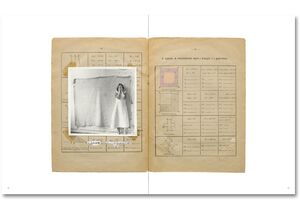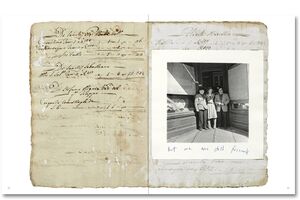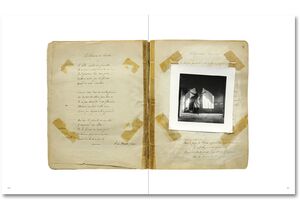Kontakt
art book cologne GmbH & Co. KG
Deutzer Freiheit 107
50679 Köln
Germany
Öffnungszeiten Büro und Showroom:
Montag-Freitag von 8-17 Uhr
info@artbookcologne.de
Tel.: +49 221 800 80 80
Fax: +49 221 800 80 82
Über uns
Seit 1997 sind wir Großhandel für hochwertige Publikationen der Gebiete Kunst, Kunsttheorie, Kunstgewerbe, Architektur, Design, Fotografie und illustrierte Kulturgeschichte. Unser kleines Team setzt sich aus den Fachgebieten Kunst, Kultur, Musik, Buchhandel und Medien zusammen und hat bei aller Vielfalt einen gemeinsamen Nenner: Die Begeisterung für schöne Kunstbücher.
Der Schwerpunkt unserer Tätigkeit liegt in der Übernahme von Restauflagen von Verlagen, Museen und Kunstinstitutionen. Wir bieten diese Titel dem Sortiments- und Versandbuchhandel, den Museumsshops und dem Kunsthandel an.
Francesca Woodman – The Artist’s Books
| Händlerinfos | Handelsrabatt: 1-2 Ex. 35% | 3+ Ex. 40% |
| Verlag | MACK Books |
| Jahr | 2023 |
| Einbandart | Fester Einband |
| Sprache | Englisch |
| ISBN | 978-1-913620-88-2 |
| Seiten | 416 |
| Gewicht | 2350 g |
| Mehr | |
| Beiträge von | Katarina Jerinic |
| Artikel ID | art-58593 |
Francesca Woodman made her first mature photographs at the age of thirteen and went on to create a body of work that has been critically acclaimed for its singularity of style and innovative approach to photography. Despite her lifetime accomplishments – which included solo and group exhibitions and the publication of one of her books – and her work being celebrated widely in the years since her untimely death in 1981, very little has been published about her remarkable series of artist’s books until now.
»Francesca Woodman: The Artist’s Books« collects for the first time every page of all eight of Francesca Woodman’s unique artist’s books in one comprehensive volume, including two newly discovered books which have never been seen before, alongside better-known titles such as 'Some Disordered Interior Geometries'. The basis of these works is in tattered nineteenth- and early-twentieth-century journals and notebooks that Woodman collected from bookshops and flea markets in Rome in the late 1970s. She later transformed these found volumes, attaching her prints, transparencies, and written annotations to their evocative pages. These books demonstrate a sophisticated relationship to narrative and sequence and offer a new understanding of the scope of Woodman’s engagement with the book form.
















